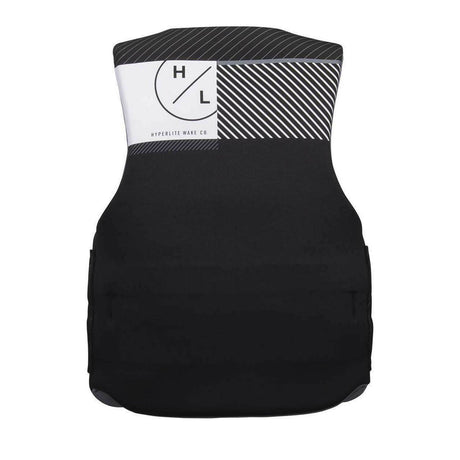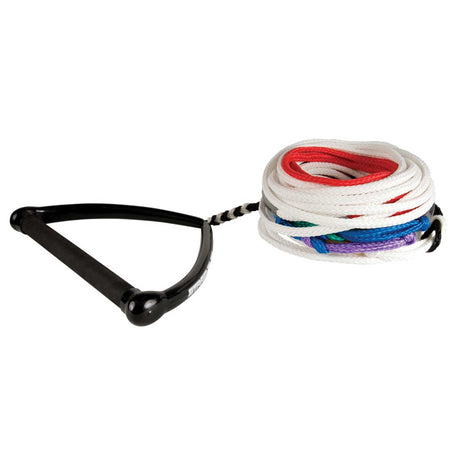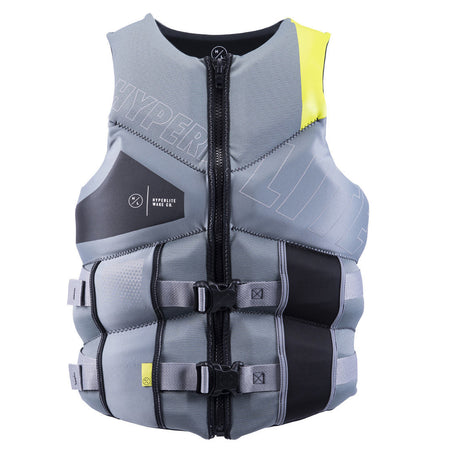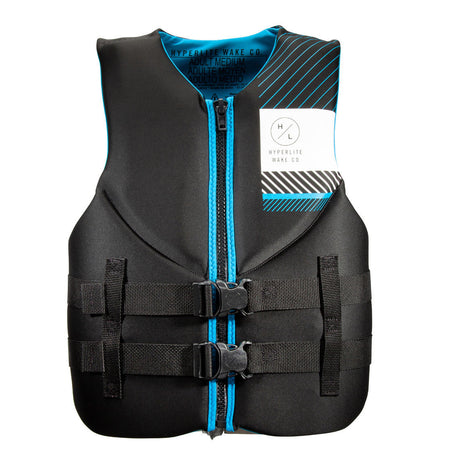Kneeboards look simple at a glance. But there are key aspects of a kneeboard's physical shape and design that make a board better (or worse) for specific riding styles on the water. There are two primary designs that influence how a board handles.
Flat-Bottomed Kneeboards

Flat-bottomed kneeboards are built for speed. The flatter the bottom, the less overall friction there is between the kneeboard and the surface of the water. This allows the board to "skate" higher atop the water.
Flat kneeboards are also smoother atop the water. These boards suffer less bounce and chop on turbulent water and windy days.
The tradeoff is that a flat-bottomed kneeboard enjoys less "pop." These boards don't get as much height as a curved kneeboard when it comes to jumping off wakes. That means less air time for performing tricks and spins.
Boards with flatter bottoms also tend to be less responsive when you're trying to make sharp turns and transitions. To help improve responsiveness and control, flat-bottomed boards may have fins installed at the rear, like the board pictured above.
Curved-Bottom Kneeboards

Kneeboards with curved bottoms -- also called rocker profiles, or just rockers -- get less speed atop the water. These boards are more susceptible to water conditions: As the center of the board rides deeper in the water, it is more easily affected by chop and turbulence.
The curved shape also forces water to accelerate as it flows across the bottom of the board, much like an airplane wing. This causes kneeboards with rockers to feel bouncier than flat boards.
But these boards provide more airtime when popping off wakes, with smoother landings, and they provide better control in the water. They're easier to turn and transition from side to side.
Kneeboard Edges

The edges of a kneeboard also play a key role in how a board performs, and what it'll be used for.
Wide Edges (Recreational)
Many kneeboards have wide edges made from soft material. These edges provide smooth riding and good control and stability. Boards with these edges are designed for kids and more casual, recreational riding styles for all ages.
Thin Edges (Performance)
Kneeboards with thin, hard, sharp edges are designed for quick transitions and sharp turns, maximizing responsiveness for competitive and trick riding. These edges facilitate grabbing air and spinning atop the water.
Rectangular vs. Rounded Kneeboards
The physical shape of a kneeboard is just as important as its rocker profile and edges. Rounded boards are better as performing tricks, spins, and transitions. They're also easier to jump and land smoothly. Rectangular kneeboards provide better stability and straight-line speed.
"Which Kneeboard is Right For Me?"
We've covered the three important components of a kneeboard -- rocker profiles (flat vs. curved), edges (wide and soft vs. thin and sharp), and shape (rectangular vs. round).
Let's put these all together to figure out what kneeboard design is best for specific riding styles and activities.
For Competitive/Slalom Riding
Competitive and slalom riding requires a kneeboard that's capable of making tight turns and providing high responsiveness, while affording high speed in straight lines.
The optimal kneeboard design for this type of riding is one that combines a rectangular shape with a flat bottom, and sharp, thin edges. Fins are also a must-have in this scenario -- they'll compensate for the flat bottom's lack of turning ability to make navigating courses easier.
For Tricks and Big Air
A kneeboard that lets you grab air, spin, and flip is one that provides a rounded shape with thin, sharp edges and a deep rocker -- a curved bottom, that is, for maximizing pops off the wake and providing smoother landings.
For Recreational Riding
Recreational riders only need modest turning ability and responsiveness. Here, straight-line speed and stability are the most important attributes to pursue. Either a rounded or rectangular board shape will do. It's more important to stick with wide, soft edges and a slightly curved rocker. This combination provides enough turning ability to maintain control, without sacrificing smoothness and comfort.
"What About Multipurpose Boards?"

Multipurpose boards -- like the famous HO RAD (Round Aquatic Device) Disc -- are purely recreational. These round towables predate modern kneeboards, water skis, and wakeboards. When first introduced in the 1960s, the RAD acted a casual alternative for people who wanted to take a ride behind a boat without learning the more complicated task of water skiing.
Originally made from simple plywood, modern RADs are now made from high-density foam and drop-stitched inflatable materials. They also have grippy surfaces and handles, allowing riders to sit or stand atop the disc. Though ridden like a kneeboard, a RAD is similar to a towed tube.
Ready to Start Kneeboarding?
Check out our kneeboard collection! We have recreational and competitive/trick boards available from Connely, O'Brien, HO, and other popular board makers.
Before you get in the water, read our beginner's guide to kneeboarding. It covers tips for riding, how to get started in the water, what size board to get, and how to properly wear a knee strap.















